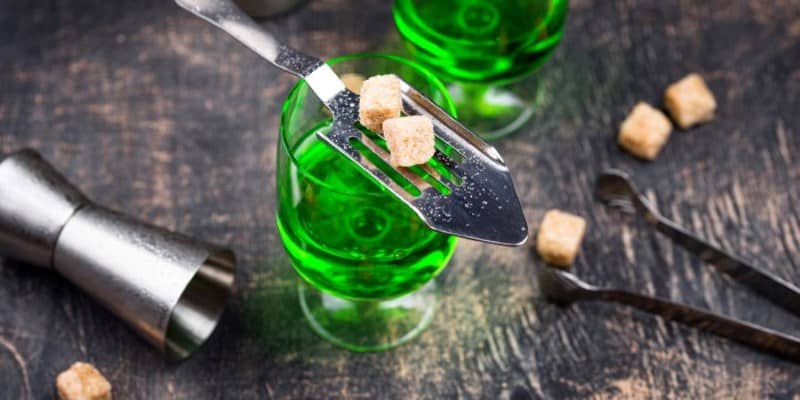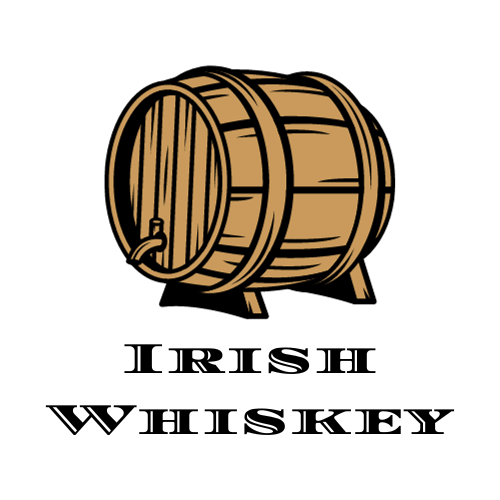Have you ever wondered about how strong is absinthe? Well, look no further! In this article, we will explore the strength of this legendary spirit that has captivated drinkers for centuries.
From its history to its production methods, we will dive into the world of absinthe and shed light on its alcohol content. So grab a glass and get ready to be amazed by the potency of this intriguing elixir.
What is Absinthe?
Definition of absinthe
Absinthe is a highly alcoholic distilled spirit that is known for its distinct green color and strong herbal flavor. It is traditionally made with a combination of botanical ingredients, including wormwood, anise, and fennel. Absinthe has a long history and cultural significance, particularly in countries like France and Switzerland.
Historical background of absinthe
Absinthe was first developed in the late 18th century by a French doctor named Pierre Ordinaire. It gained popularity in the 19th century, especially among artists, writers, and bohemian circles. However, it also faced controversy and was eventually banned in many countries due to concerns about its alleged hallucinogenic properties.
Absinthe ingredients and production process
The main ingredients in absinthe include wormwood, green anise, fennel, and other botanicals. Wormwood, in particular, contains thujone, a chemical compound believed to have psychoactive effects. The production process involves distilling these ingredients with high-proof alcohol and then diluting it to the desired strength. The exact methods and proportions of ingredients can vary among different producers.
Understanding Alcohol Content
Alcohol by Volume (ABV) definition
Alcohol by Volume (ABV) is a standard measure used to quantify the alcohol content in a given volume of a beverage. It represents the percentage of pure alcohol (ethanol) present in a specific quantity of the drink.
Standard alcohol content for various beverages
Different types of alcoholic beverages have varying alcohol content levels. For instance, beer typically ranges from 4% to 6% ABV, wine ranges from 12% to 15% ABV, and spirits like vodka and whiskey can have ABV levels anywhere from 40% to 50%.
Factors affecting alcohol content in absinthe
The alcohol content in absinthe can vary depending on several factors, including the choice of botanicals, the production process, and the dilution with water. Wormwood, in particular, can influence the strength of absinthe, as it contains thujone, which can give the drink a higher alcohol content.
Also Check: How Much Sugar Is In Whiskey Production?
Traditional Absinthe: A Brief Overview
Characteristics of traditional absinthe
Traditional absinthe is known for its vibrant green color, strong flavors of anise and herbs, and a distinctive louche effect when water is added. It often has a complex aroma profile, with notes of wormwood, fennel, and other botanicals. The alcohol content of traditional absinthe typically falls between 45% and 74% ABV.
Popular absinthe brands and their alcohol content
There are several well-known absinthe brands, including Pernod Absinthe, Lucid Absinthe, and La Fee Absinthe. These brands offer different absinthe variations with varying alcohol contents. Pernod Absinthe, for example, has an ABV of 68%, while Lucid Absinthe has a slightly lower ABV of 62%.
Legality and regulations regarding absinthe production
The production and sale of absinthe have been regulated in many countries due to its historical controversies. The European Union and the United States have specific guidelines in place regarding the maximum allowable thujone content, as well as labeling requirements for absinthe products. It is important to adhere to these regulations to ensure the safe and legal production and distribution of absinthe.

Measuring Alcohol Content in Absinthe
Traditional methods of alcohol content determination
Traditionally, the alcohol content of absinthe was measured using a hydrometer, which measures the specific gravity of a liquid. By comparing the density before and after dilution, the alcohol content could be calculated. Another method involved the use of a glass dripper to measure the strength of absinthe by observing the rate at which drops fell into a glass of water.
Modern techniques for measuring absinthe alcohol percentage
In modern times, more sophisticated methods such as gas chromatography or high-performance liquid chromatography (HPLC) are used to measure the alcohol percentage in absinthe. These methods provide accurate and precise results by separating and analyzing the different components of the beverage.
Accuracy and reliability of alcohol measurement methods
Modern techniques for measuring alcohol content in absinthe are highly accurate and reliable. By employing these methods, producers can accurately determine the alcohol percentage, thereby meeting regulatory standards and offering consumers reliable information. It is crucial for absinthe producers to use approved measurement methods to maintain transparency and quality control.
Myths and Misconceptions about Absinthe Alcohol Content
Absinthe as a hallucinogenic drink
One of the most enduring myths about absinthe is its reputation as a hallucinogenic drink. Absinthe contains thujone, which people have associated with hallucinations when consumed in high concentrations. However, the amount of thujone in absinthe is significantly low, and it does not have any psychoactive effects on its own. The belief that absinthe causes hallucinations is a result of misinformation and sensationalism.
Exaggerated claims about absinthe’s strength
Another misconception that surrounds absinthe is the belief that it is an extremely strong alcoholic beverage. While it is true that absinthe can have a higher alcohol content compared to other spirits, with some variations reaching up to 74% ABV, this does not necessarily make it more potent or dangerous to consume.
Debunking the absinthe ‘Green Fairy’ legend
The ‘Green Fairy’ legend refers to the idea that absinthe has mystical or supernatural properties, leading to artistic inspiration and altered states of mind. This myth likely originated from the Bohemian culture of the 19th century, where absinthe was popular among artists and writers. However, the effects attributed to the ‘Green Fairy’ were more likely due to the high alcohol content rather than any supernatural qualities.
Absinthe vs Other Alcoholic Beverages
Comparing absinthe with vodka, whiskey, and tequila
Absinthe, vodka, whiskey, and tequila are all different types of alcoholic beverages with their own unique characteristics. Absinthe’s distinctive herbal flavor sets it apart, whereas vodka is renowned for its neutrality and lack of flavor. Whiskey and tequila offer complex flavors derived from the aging process and the specific type of grains or agave used. The alcohol contents of these beverages can vary significantly.
Alcohol content variations and implications
Absinthe typically has a higher alcohol content than vodka, whiskey, and tequila. This can make it potentially more potent if consumed in the same quantity. Please note that individual tolerance, drinking speed, and whether alcohol is consumed on an empty stomach can influence how alcohol affects the body.
Effects on the body: absinthe vs other alcoholic beverages
Like any alcoholic beverage, absinthe affects the body based on its alcohol content and consumption. The higher alcohol content of absinthe can lead to a faster onset of intoxication compared to other beverages. However, the effects on the body, such as impaired coordination and judgment, nausea, and dehydration, are similar to those caused by other alcoholic drinks.
Different Absinthe Variants and Strengths
Varieties of absinthe based on alcohol content
Absinthe is available in various strengths and variations, each with its own unique character. These can range from lower proof options, around 45% ABV, to higher-proof absinthes, with alcohol content reaching as high as 74% ABV. The choice of absinthe strength depends on personal preference and the desired intensity of flavors.
High-proof absinthe: characteristics and popularity
High-proof absinthe refers to those with alcohol content above 60% ABV. These absinthes tend to have a more intense flavor and a stronger herbal profile. They are popular among absinthe enthusiasts who enjoy the complexity and a greater alcohol punch in their drinks.
Absinthe dilution: balancing alcohol content and taste
Absinthe Consumption and Safe Limits
Defining moderate absinthe consumption
Moderate consumption of absinthe, as with any alcoholic beverage, is an important consideration for both enjoyment and responsible drinking. Moderate absinthe consumption typically falls within the range of one to two standard drinks per day for men and one drink per day for women. I strongly recommend that you adhere to local alcohol consumption guidelines and regulations.
Health risks and consequences of excessive absinthe intake
Excessive consumption of absinthe can lead to various health risks and consequences. These include an increased risk of alcohol-related injuries, liver damage, addiction, and other long-term health problems. Practicing moderation and staying aware of the potential risks associated with excessive absinthe intake are essential.
Guidelines for responsible drinking of absinthe
To enjoy absinthe responsibly, it is important to follow these guidelines:
- Know your limits: Understand your tolerance and how absinthe affects you personally.
- Pace yourself: Sip absinthe slowly and take breaks between drinks.
- Stay hydrated: Drink water alongside absinthe to stay hydrated and help prevent dehydration.
- Don’t drink and drive: Avoid driving after consuming absinthe or any alcoholic beverage.
- Seek support if needed: If you or someone you know is struggling with alcohol-related difficulties, reach out to support groups or healthcare professionals.

Source: TheTechBrain AI
Absinthe Preferences and Tasting Notes
Factors influencing personal preference for absinthe
Several factors can influence an individual’s preference for absinthe. These include personal taste preferences, the desired alcohol content, the choice of botanicals used in the absinthe, and even the presentation and packaging.
Tasting techniques and flavor profiles of different absinthe
Tasting absinthe involves appreciating its complex flavors and aromas. Adding water to absinthe creates a milky opalescence known as the ‘louche’ effect. Flavor profiles can vary, with absinthes ranging from floral and herbal to more bitter and robust.
Exploring the diverse aromas and finishes in absinthe
Conclusion
Traditional absinthe is a unique and storied spirit with a significant alcohol content. Recognizing its distinct characteristics and appreciating its rich history can enhance the enjoyment of this beloved beverage.
It is crucial to respect the alcohol content of absinthe and consume it responsibly. Ensuring moderate and measured consumption is key to avoiding adverse health effects and experiencing the beverage in a safe and enjoyable manner.


